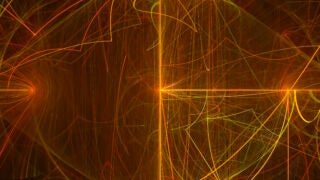“Moneyball” for Basketball: Using Science to Change the NBA
USC Viterbi scientists to crunch the largest amount of basketball data ever gathered
As the NBA Finals gets underway this week, two researchers at USC Viterbi School of Engineering will already be hard at work sifting through a season’s worth of statistics from 10 NBA teams, looking for insights that may transform the game of basketball.
Using the largest amount of basketball stats ever collected — more than a million data records per game — USC Viterbi computer scientists Rajiv Maheswaran and Yu-Han Chang will break down the current basketball season, including data collected from the NBA championship series.
The researchers from USC Viterbi are the only university team in the country with full access to new SportVU optical tracking data, which uses video cameras installed in participating basketball arenas to capture real time video footage, as many as 25 frames per second. The data is then run through image processing algorithms, reducing copious amounts of game footage to massive data files of numbers.
For the average NBA coach or scout, the raw data might seem meaningless or overwhelming. But to Maheswaran and Chang, who lead the Computational Behavior Group at the USC Information Sciences Institute, it’s a gold mine of information: spatial dynamics, basketball trajectories, player velocities, movement tracks, etc.
“What (Rajiv and Yu-Han) can do with the data is far beyond what we or any NBA team can do with the data,” said Brian Kopp, vice president of strategy and development at STATS, owners of the SportVU technology.
Indeed, the insights to be found are only limited by the creativity of the questions. What are the differences when Dwyane Wade drives left instead of right? What is the impact of Russell Westbrook’s driving ability on the Thunder’s offensive efficiency? How much of the court can LeBron James defend effectively? Why does Serge Ibaka get so many blocks?
And patterns are already starting to appear. In March, the USC duo won best paper at the MIT Sloan Sports Analytics Conference for their work analyzing rebounding using data captured by SportVU. After looking at more than 11,000 shots from the past season, the researchers discovered a relationship between the location of a shot and the odds of an offensive rebound: for every foot away from the basket, the chance of an offensive rebound decreases one percent until the three-point line, where it suddenly improves.
By studying the trajectories of the ball, Maheswaran and Chang discovered that to get offensive rebounds, players need to move far closer to the basket: ninety percent of all missed shots can turn into an offensive rebound within 11 feet of the basket.
Approached by SportVU for their undaunted attitude toward the prospect of handling vast amounts of raw data, Maheswaran and Chang will spend the summer tackling the “holy grail of basketball analytics”: defense.
“Box scores have a lot of offensive statistics, but very little about defense. Basically, with this data, we might be able to solve the holy grail, which is: what is good defense? What does it mean to play good defense? Because, if somebody runs around with the ball for 24 seconds and misses a shot, you can actually see what the players were doing to prevent a good shot from being taken. We can also really do very specific player profiling, if we do it right,” Maheswaran said.
Said Chang, “When the data gets to us, it’s just this big log file of lots and lots of numbers. And so it’s a challenge to transform that into a meaningful data that we can actually apply algorithms to, something we can actually discern patterns from.”
Both Maheswaran and Chang are quick to point out that superstar players are still key components of a team’s success. In a playoff situation between two evenly matched teams, however, every strategic insight on match-ups and player tendencies could be the difference between winning or losing an NBA championship. And by next season, NBA teams will have a lot more insight to draw from, thanks to the research taking place at USC.
To arrange an interview with Professor Maheswaran or Professor Chang, contact Katie Dunham at knd@usc.edu.
Contact: Katie Dunham at (213) 740-3992 or knd@usc.edu


